Question
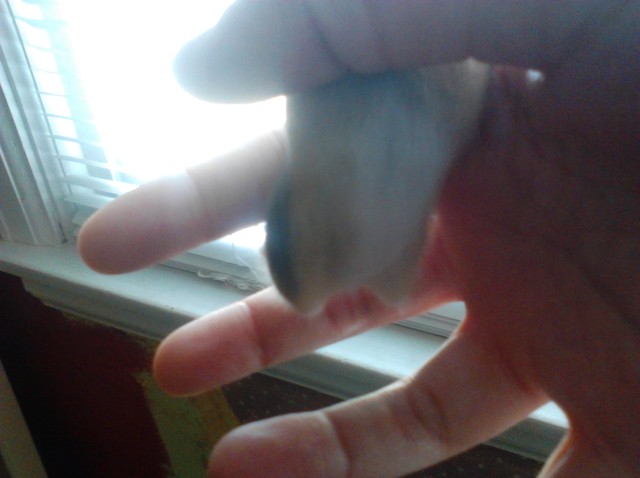 mouse belly
mouse belly
Hi Natasha,
Its me again only this time about something completely different. My mouse Trick looks like her coloring was supposed to be a chocolate tan but she has some white markings as well. Her belly is mostly a nice tan color on the lower half and white up by her face with a small patch of white located in the middle of the tan. I personally just find it adorable and a unique trait that belongs to her. I was just wondering if maybe her line of genetics caused it to happen? Or is it possible in the tans for it to happen?
I was also thinking about getting into breeding and showing mice but the mice I have now are all store bought and I read somewhere that generally those are not good to start off with because they could have hidden genetic and coloring defects. I don't want any mice to suffer if any of the mice I own now might harbor a hidden serious genetic defect!
So I was wondering if maybe you know of any good private breeders within or near my area or if there were any shows coming up in my area where I can meet fellow mice breeding enthusiasts. All help would be appreciated and any advice you have on breeding mice for stuff like this. :) I will be able to afford breeding as well since I have a steady job.
One more sort of unrelated question, my brother owns two mice one is a big fellow and he seems to be quite the couch potato is there any way to encourage him to run on the wheel? The other male has this sneezing he does and he has been doing it since we bought him. It doesn't seem to be bothering him any and ironically they both live in the same cage. Bffl's as well those two are. ^_^
I live in Cedar Rapids, Is
You can also contact me at my email xxhellshoundxx@gmail.com
I have attached a picture of Tricks belly to show you what I mean and sorry if it isn't very good quality.
AnswerDear Lynnsey again,
For the first question, please write to the other mouse person, Tamarah. I don't do genetics.
I do, however, very much advise against informal breeding in almost any situation.
Here are a couple of answers I have written to people about the perils of home breeding. In the last case it was about the 16th question the kid had written to me, so there is a long story involved.
http://en.allexperts.com/q/Mice-3824/2008/10/Breeding-Mice-1.htm
http://en.allexperts.com/q/Mice-3824/2008/8/1-male-3-females.htm
http://en.allexperts.com/q/Mice-3824/2012/4/mice-pregnant-1.htm
I have put a shout-out for people about mouse people in Iowa. If I get any answers I will either revise this answer (you will get a notification) or write another message.
**
Some mice are fat and lazy, like some people!! There is no kind way to get him to run in the wheel... one horribly ignorant person was spraying his mouse with water to get him to run... horrors! Anyway as long as his diet is good and he gets no fatty treats, it is Ok for him to be fat. Really the only time it is a problem for a healthy mouse to be fat is if it has trouble getting around (or gets sores on its belly-- some mice do get that fat!).
**
Sneezing is never good. You must do something about this. The likely causes are a respiratory infection or allergies. You should bring the mouse-- and cagemate/s-- to the vet.
If that is simply impossible, there are ways to treat mice at home. I am going to be lazy and copy and paste a few older answers:
Respiratory infections:
"Your mice definitely have a respiratory infection. It is probably a bacterial infection that mice carry all the time called myco.
"The over-the-counter antibiotic that I use for myco is Tetracycline, which is available in the FISH section of your pet store or aquarium store. It either comes in powder, tablet, or capsule form. If it is a tablet, you will need to crush it into fine powder, which you can do with the back of one spoon against the front of another. If it is a capsule you will empty the powder out of the capsule. One capsule is the same as 1/4 flat teaspoon.
"Take one capsule and mix it with a drop or two of water until you have a mustardy paste. Grab the mouse by the scruff (back) of the neck to open its mouth, and try to get a bit of the paste in the mouth. The mouse will struggle a lot and this may be impossible. In any case, smear some on the whiskers and sides, where it can easily wash it off and ingest it.
"Put another capsule's worth in a large water bottle (10-12 oz), or half that in a small water bottle (4-6 oz), and that should be the only source of water for about 10 days. Shake it up well. Change it every other day. Cover the bottle with tin foil so no light can get in. Tetracycline reacts with light.
"If this does not work, they either have a strong case of myco, or a secondary infection. Unfortunately the only place to get strong enough or different antibiotics is the vet. Call around; you may be able to find someone cheaper. But they must know mice. Expect the new drug to be Baytril, Amoxicillin, or Doxycycline."
Allergies:
"Let's examine the allergy component, which is something you can deal with at home. An allergy could be to a new substance or the sudden development of a reaction to a familiar one. Has anything changed in or near the cage recently? New food, new bedding, hair spray, air freshener, furniture polish, anything?
"Second, you might think the mouse wouldn't suddenly develop allergies at this late age. In people, however, this can happen. The following is from my knowledge of people allergies-- since mice are used to study people health, they are likely very similar. First, allergies can be developed by overexposure to a substance. This is why so many cat lovers are allergic to cats. Growing up with cats exposes them to cats enough that they develop the allergy. Thus I am now allergic to mice and cats (a couple of 24-hour Loratadine a day make it possible for me to continue to enjoy my pets). This goes for foods too. I developed allergies to both garlic and rosemary from overexposure, one over a period of time and one from overexposure within one rosemary-packed week(!) The second way an allergy can be developed is simply due to age. There are ages at which allergies are likely to appear and disappear. With people it is about around ages 5-7, 10-12, 18-21, mid-thirties, and probably later too. I developed very severe hay fever very suddenly at age 21. And my cat allergy suddenly became manageable in my late 30s. You can tell why I know about allergies!! So mice may have cycles during their lives as well.
"So, what to do about allergies? You need to identify the substance that is causing the problem. The most obvious is the bedding. Simply try another type of bedding. More complicated would be a food allergy. The most common food allergies in mice are to corn and sunflower seeds. Try removing these. If after two days the problem doesn't improve at all, you can be more drastic and choose one food to give the mouse alone. If the allergy remains, try a different one. It's unlikely the mouse will happen to be allergic to both substances, so if that doesn't work, it's probably not an allergy. If the allergy does disappear, however, then you can introduce each food separately one by one every two days, until you find the culprit. If the symptoms don't disappear, it's very likely not an allergy."
Another time I gave this advice, which is a little more detailed as to method:
"Strip down her environment to as hypoallergenic a situation as possible and see what happens. This is going to be complicated, but you love her very much so I'm sure you won't mind.
"Clean her cage and plastic/metal accessories just by washing thoroughly with with water. Then just give her paper towels as bedding. For food give her oats. Make sure you use no chemicals in the room at all-- no air freshener, furniture polish, cleaning agents, etc. Do this for 3 days and see if the symptoms recede.
"If the itching stops, start to add types of food. If she has a seed mix, you will want to separate out the seeds by hand! You can change something every day, but if she sneezes you will want to go back about three days worth of materials. At some point when she has a somewhat varied diet, the change you can make is to give her decent bedding again. If you use wood, the *only* safe kind is aspen. Do sunflower seeds, and then corn, last, because they are common allergens. Never give a mouse peanuts; and if they are in the mix, always take them out.
"As I said, go back three days' worth of changes if she begins sneezing or itching again, and try something else instead of what you tried. This way you will find out what she is allergic to."
Let me know if anything is unclear. And write to Tamarah about the genetics.
squeaks n giggles,
Natasha


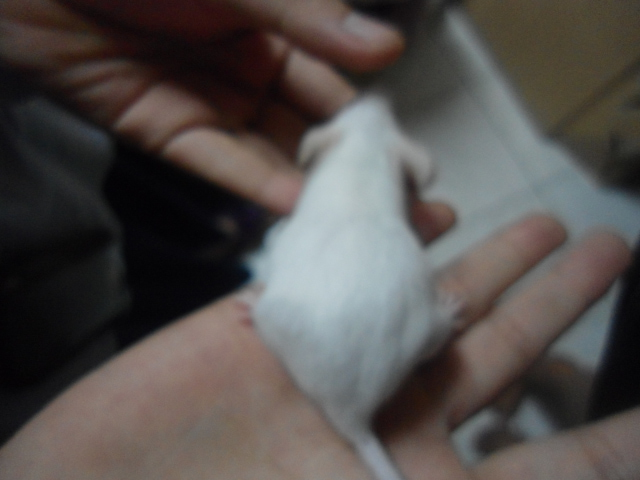 Pregnant mouse/ new babies
QuestionQUESTION: Hello again natasha mice mouse :D
W
Pregnant mouse/ new babies
QuestionQUESTION: Hello again natasha mice mouse :D
W
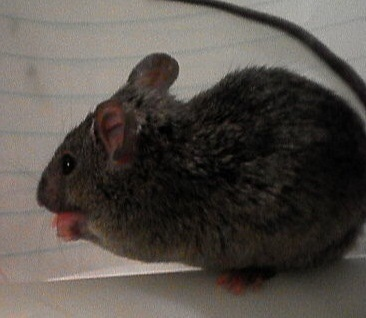 sneezing mouse!
Question
mousey mousey
I got my first mous
sneezing mouse!
Question
mousey mousey
I got my first mous
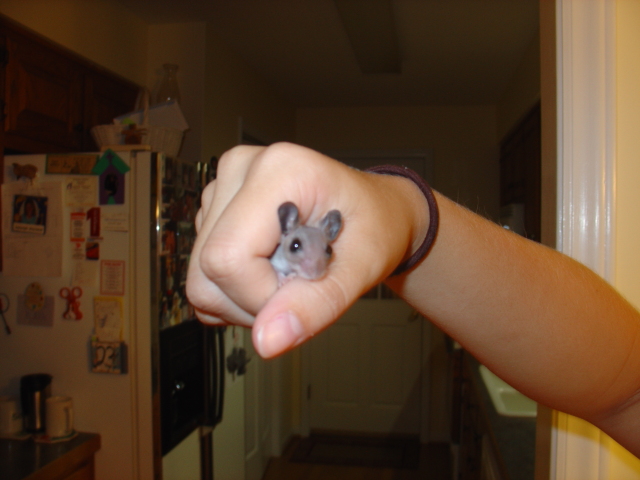 female deer mouse hoarding/weight loss
Question
Velveeta
Hi Natasha! First let me tell you you
female deer mouse hoarding/weight loss
Question
Velveeta
Hi Natasha! First let me tell you you
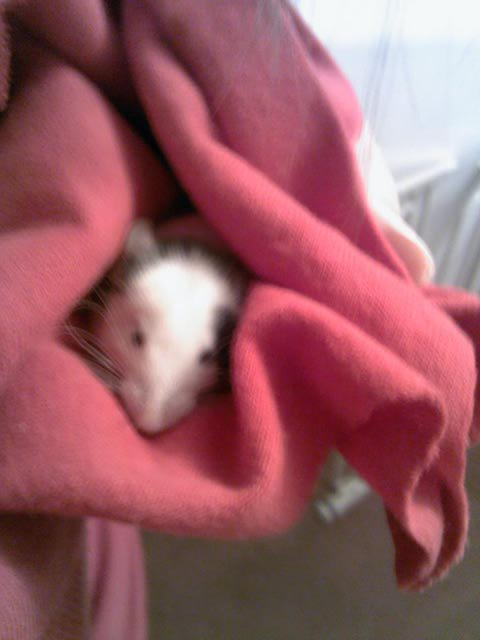 How to care for very sick mouse
QuestionMy lil Rum
QUESTION: I have tried to fin
How to care for very sick mouse
QuestionMy lil Rum
QUESTION: I have tried to fin
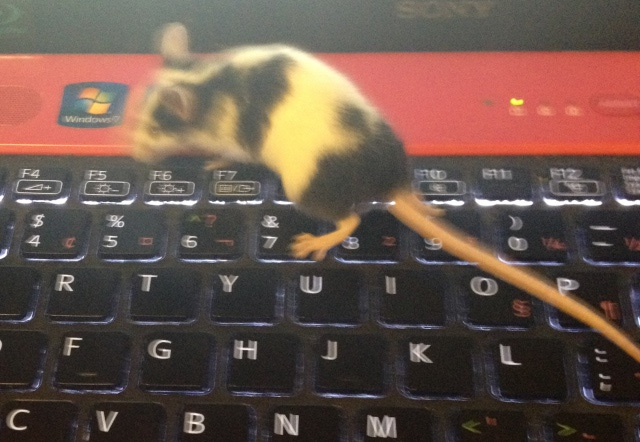 My mouse ate her dead friend?!
Question
Roxy
Hi Natasha,
First off I want to s
My mouse ate her dead friend?!
Question
Roxy
Hi Natasha,
First off I want to s